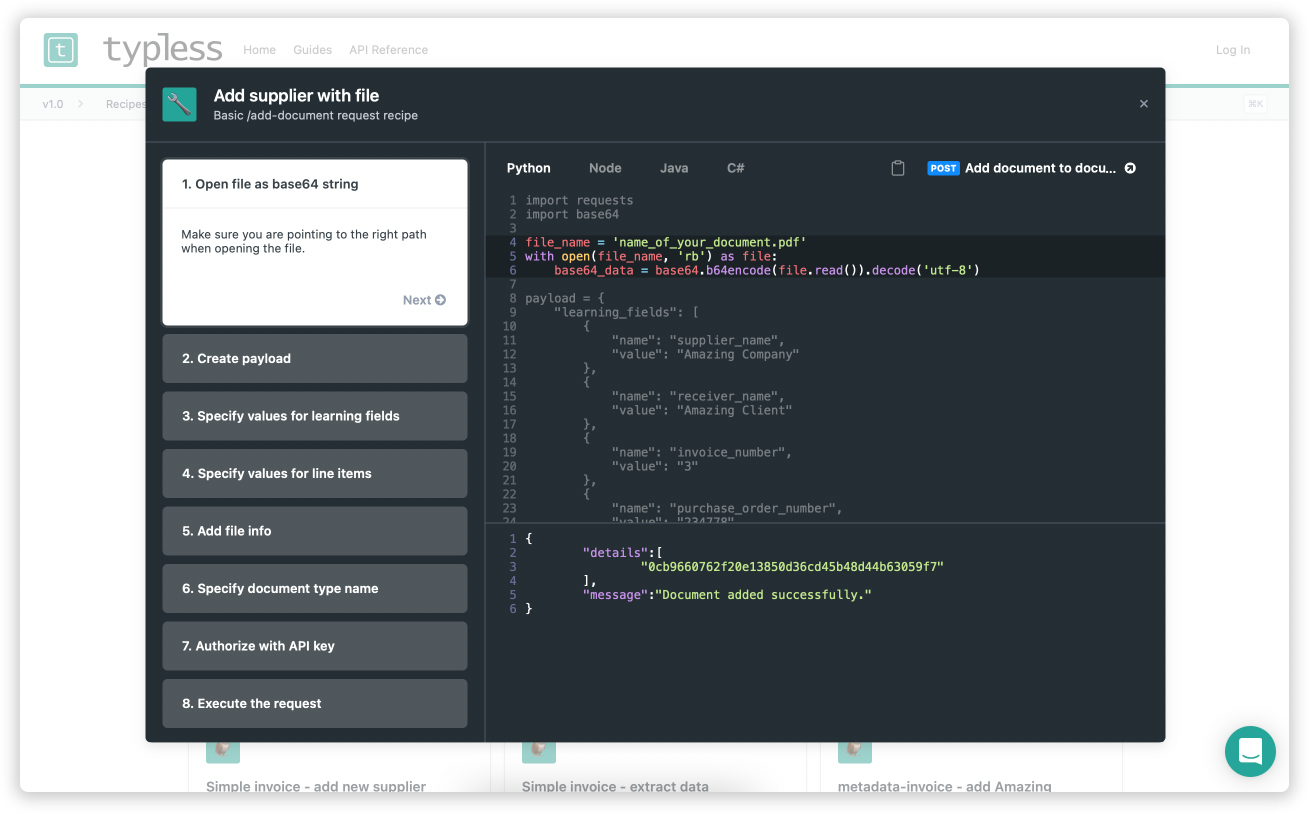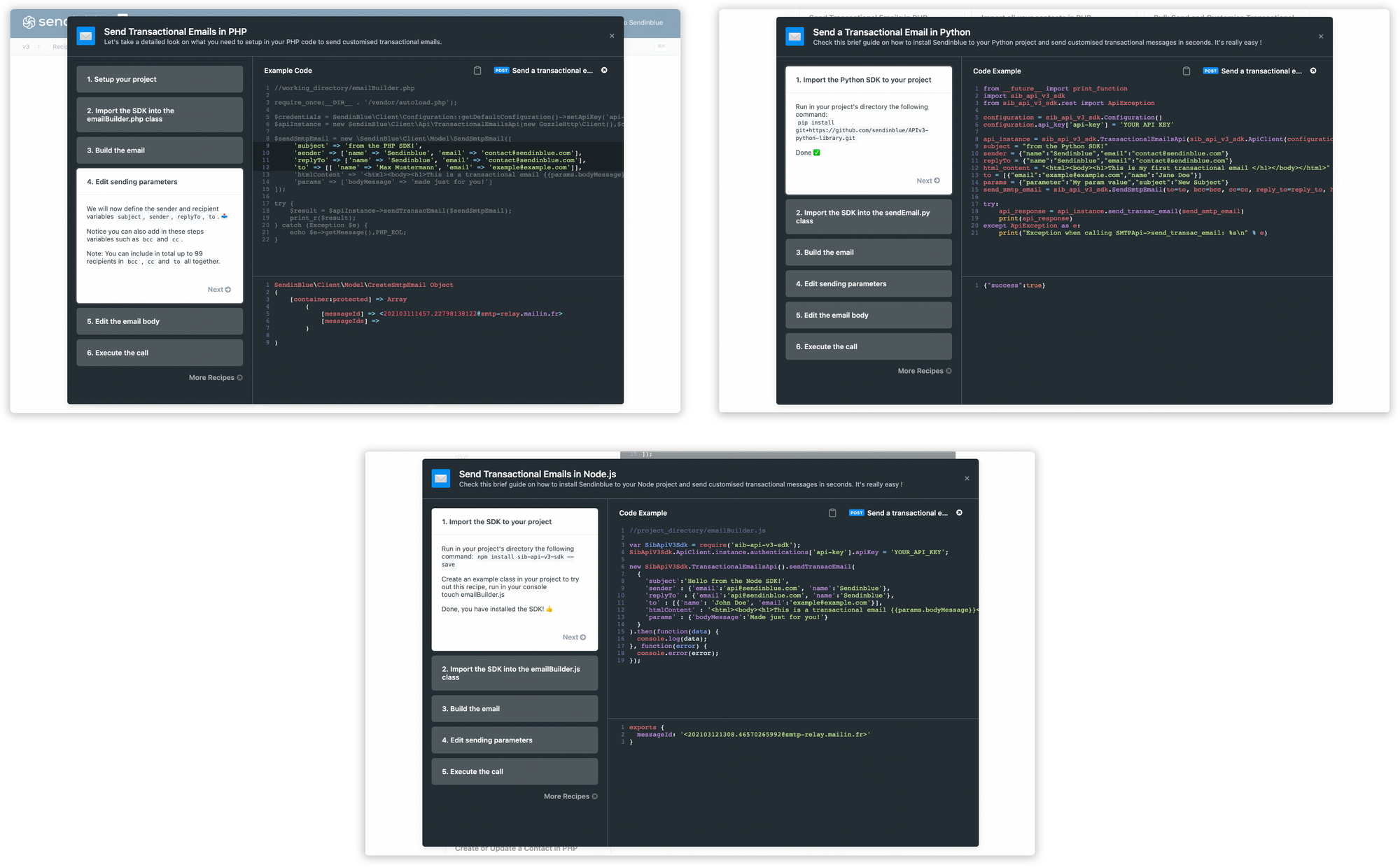Getting started with a new API can be complicated. But we don't think it has to be! So much time goes into making product onboarding smooth and simple — shouldn't APIs be the same way?
That’s why we built ReadMe Recipes. They're a new way to highlight your top API use cases and walk through code samples step by step, so it’s easy for your developers to get started fast. Once you’ve made a Recipe, you can embed it throughout your docs for one-click access on related endpoints or guides.
Something we think about a lot at ReadMe is how we can better help customers “show, not tell” with their docs. Who wants to read paragraphs of text when you could learn faster from a relevant, reusable example?
So we’re applying the same idea here — instead of going on and on about how Recipes work, here’s the inside scoop from a few customers already cookin’ up new Recipes in their docs 👨🍳 (And yes, the cooking puns are out of control around here.)
How Ascend.io cuts the burden of data engineering
Ascend.io's data engineering platform frees up data teams to spend less time maintaining brittle data pipelines and more time innovating. Their flex-code approach democratizes data engineering to help teams build 10X faster and automate maintenance — all with 95% less code.

Since Recipes is all about helping developers get started faster, it was right up their alley to start building. As founder and CEO Sean Knapp put it: "Ascend.io is focused on making data engineering smarter and easier, and using ReadMe Recipes in our documentation is a natural extension of doing just that. With Recipes, we can provide users simple to follow instructions for getting started with and using the platform — without having to spend hours creating the walkthroughs, which is a crucial time savings for our team."
Simpler instructions with less time and effort? Count us in.
How Typless takes the pain out of data extraction
Typless only recently started using ReadMe, and Recipes was actually a deciding factor for them when choosing a docs platform.
Their OCR (optical character recognition) API enables their customers to extract complex invoice data in a single call. Despite this simplicity, their Head of AI, Gal Giacomelli, shared that they'd previously struggled to communicate how easy Typless was to use — a meta challenge we can all relate to.

After building out more than 15 (!) Recipes to start with, their investment in building a great developer experience is already paying off. Since launching their ReadMe docs site, they've seen a clear uptick in successful first API calls from new customers. That metric is critical for API-first companies, and we can't wait to see how Typless continues to innovate.
How Sendinblue makes transactional emails a snap
Sendinblue provides marketing automation tools with a focus on scalability, so their platform evolves as businesses grow. Too often, marketing automation platforms fall on one extreme or the other — incredibly basic or overly complex — causing costly migrations as an organization matures and their needs change. Sendinblue breaks this cycle by keeping their products flexible for growing teams.
One area in particular that requires customization? Transactional email. Because these notifications are unique to every business, Sendinblue keeps it simple set up the exact triggers developers need. Mauricio Mourraille, the PM for APIs at Sendinblue, shared that once they identified the most common use cases for their SDKs, they used Recipes to ensure actions were executed in the correct order — from package installation to emails being sent.

Providing an easy on-ramp for all kinds of developers was key, so Sendinblue created Recipes for the most common code languages their customers use: PHP, Python, and Node. By walking through their top use cases for all three languages, they give their developers a jump start no matter what code language they want (or need) to use.
Feeling inspired to whip up a Recipe? (Sorry, we can't resist 🤦♂️)
You can set them up anytime right from the /recipes page of your docs. Your developer community won't see them until you hit publish, so feel free to play around! We've got more detailed instructions for you in our docs if you need them.
This feature is only available to ReadMe customers, so if you're not yet using ReadMe for your docs, you can get started with a free trial here.

